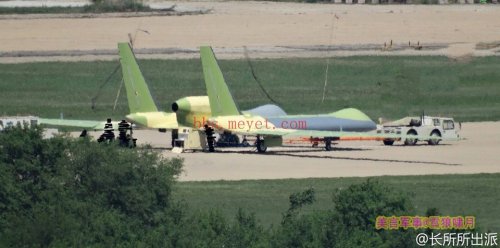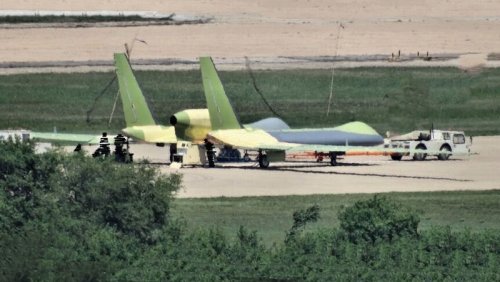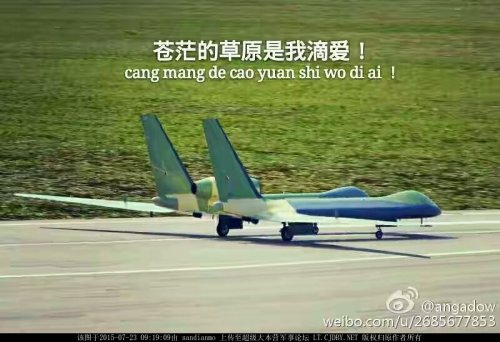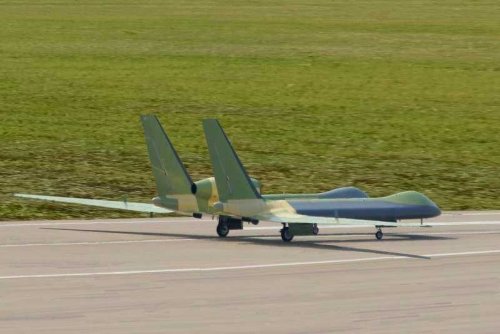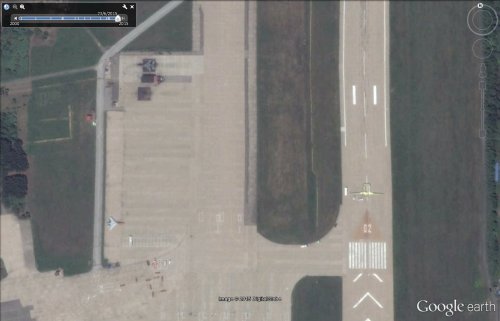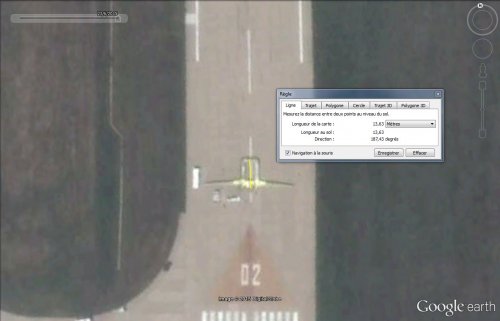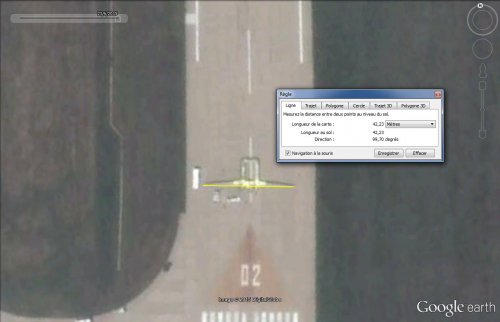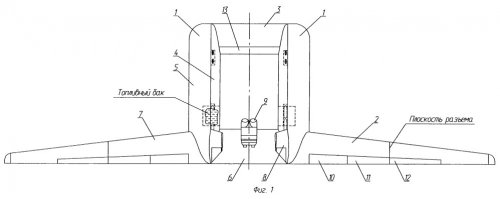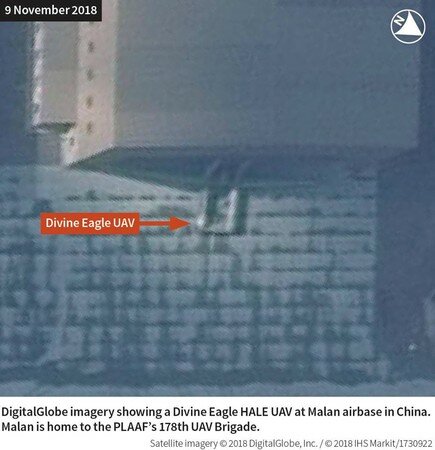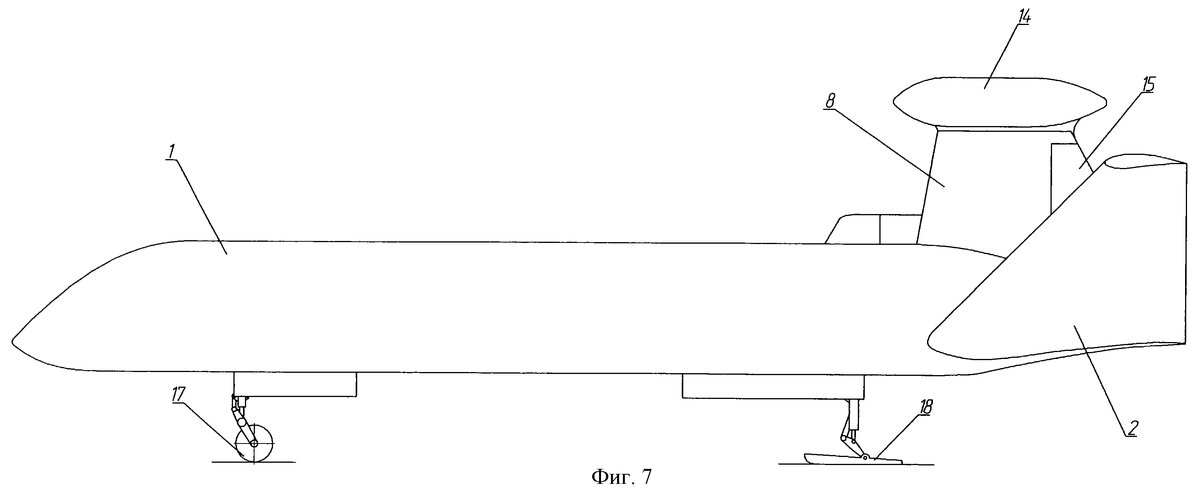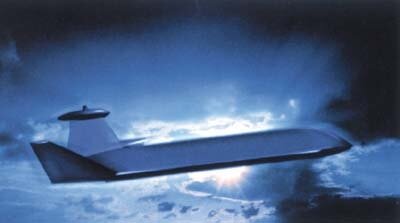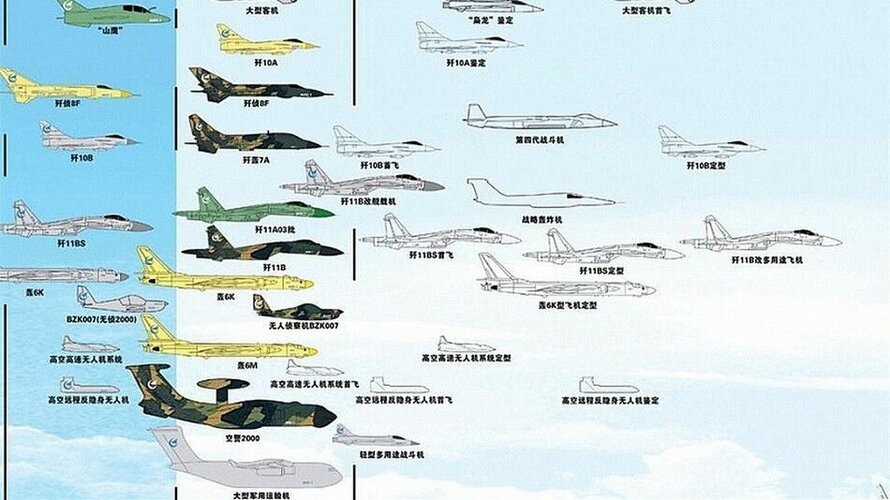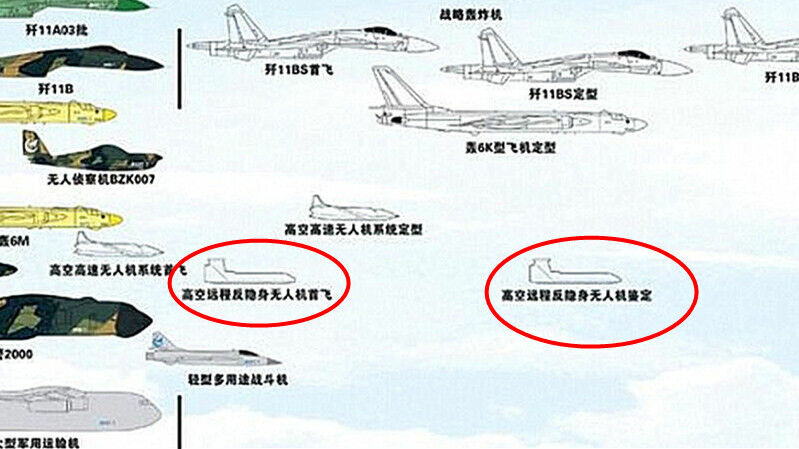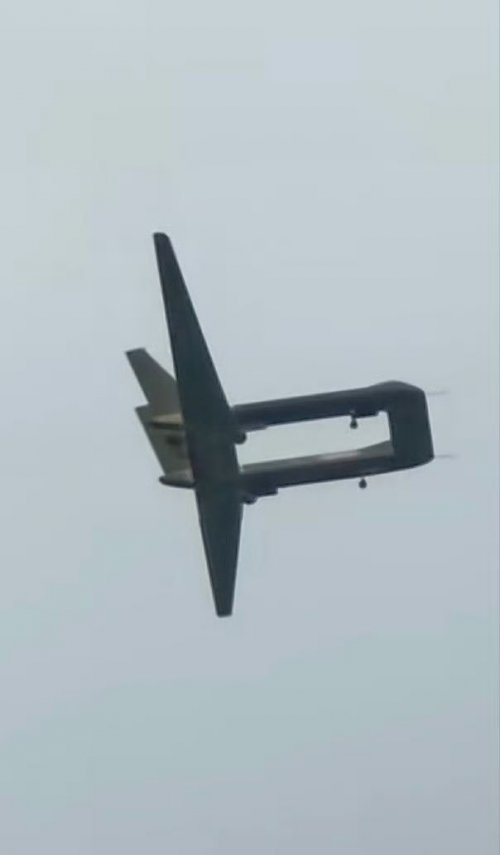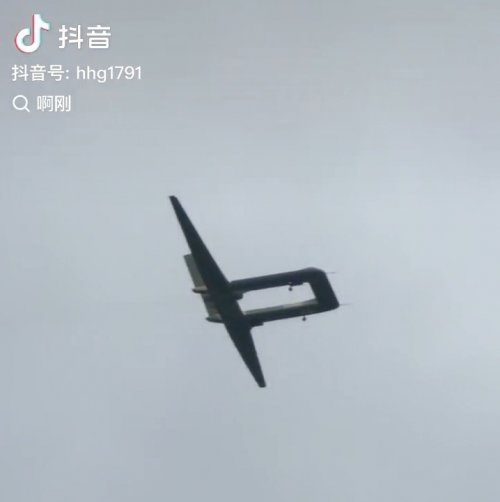You are using an out of date browser. It may not display this or other websites correctly.
You should upgrade or use an alternative browser.
You should upgrade or use an alternative browser.
SAC 'Divine Eagle' HALE AEW UAV
- Thread starter Deino
- Start date
I
Ian33
Guest
That is crazy beautiful. What an amazing decade for.Chinese aerospace.
- Joined
- 3 June 2011
- Messages
- 18,339
- Reaction score
- 12,245
Ian33 said:That is crazy beautiful. What an amazing decade for.Chinese aerospace.
x2. That and that diamond-wing UAV they're flying are pretty cool.
I
Ian33
Guest
Thanks Deino, love watching this mad ramp up of Chinese technology.
I don't fear the Chinese, I admire them. Talk about single minded pursuit of excellence. Bravo.
I don't fear the Chinese, I admire them. Talk about single minded pursuit of excellence. Bravo.
- Joined
- 3 June 2011
- Messages
- 18,339
- Reaction score
- 12,245
Ian33 said:Thanks Deino, love watching this mad ramp up of Chinese technology.
I don't fear the Chinese, I admire them. Talk about single minded pursuit of excellence. Bravo.
Makes me think of the US and UK in the late 50s/early 60s. (But I wouldn't want to be one of China's neighbors. It won't be pleasant.)
- Joined
- 2 January 2006
- Messages
- 3,828
- Reaction score
- 5,133
FighterJock
ACCESS: Above Top Secret
- Joined
- 29 October 2007
- Messages
- 5,609
- Reaction score
- 5,941
Interesting to see Divine Eagle on Google Earth. What PLAAF airbase was it?
"Divine Eagle: How much of a threat is China's new high-flying drone to US air superiority?"
by Mark Piesing
August 6, 2015
Source:
http://www.independent.co.uk/news/science/divine-eagle-how-much-of-a-threat-is-chinas-new-highflying-drone-to-us-air-superiority-10441385.html
by Mark Piesing
August 6, 2015
Source:
http://www.independent.co.uk/news/science/divine-eagle-how-much-of-a-threat-is-chinas-new-highflying-drone-to-us-air-superiority-10441385.html
In May, grainy pictures emerged of a huge new twin-fuselage, high-altitude Chinese drone called the Divine Eagle. Those in the know instantly labelled it the "stealth-hunting drone". Stealth technology is the equivalent of electronic camouflage for planes, making them hard for enemy radar to spot – but the Chinese drone is certainly big enough to carry the special radars developed to detect stealth aircraft. It's able to fly high enough to detect them long before they can reach their targets. Its radar is rumoured to have been able to pick out an American stealth F-22 Raptor off the coast of South Korea almost 500km away.
To some analysts, the Chinese drone represents the death of stealth – for others, merely a serious threat to the future of the technology on which America has based its air superiority.
Stealth, or "low observable technology", is a combination of aircraft design, tactics and electronic countermeasures designed to make planes less visible to radar and other systems, which the US has pioneered. As well as trying to create the lowest possible radar signature by getting rid of the tail, it also tries to reduce things such as infrared emissions from the engine exhaust and electromagnetic emissions from the computers on board. Stealth tactics involve looking for gaps in air-defence systems.
When people think of stealth aircraft, they tend to picture the triangular black F-117 stealth fighter and B-2 bombers that penetrated Saddam Hussein's much-vaunted air defences at the start of both Gulf wars – or perhaps the troubled Lockheed F-35 Lightning stealth fighter programme on which the UK has gambled the future of its aircraft carriers. However, the Horten Ho 229 flying wing developed by the Nazis during the Second World War was probably the first. While the Lockheed SR-71 Blackbird spy plane used some basic stealth technology, the great leap forward in stealth really occurred in the 1970s with the Lockheed Have Blue project to develop a stealth fighter. This programme led directly to the F-117 and B-2.
However, success has a downside: your rivals begin to take stealth seriously and start the race to make the invisible visible. For some time the answer was a technology that the West had discarded but the Soviets had continued to develop – and which was responsible for the headline downing of a supposedly invisible F-117 in 1999 during the Kosovan conflict by the supposedly obsolete Serbian air defences.
"In reality, stealth planes are never completely invisible, as they will always generate a radar signature in the end," Douglas Barrie, senior fellow for military aerospace at the International Institute for Strategic Studies in London, says. "What you are trying to do is hold this moment off for as long as possible. If you are seen five miles from your target, compared to be being spotted 100 miles away, then it will have done its job.
"If there was a window when stealth fighters and bombers were undetectable, then it was when the F-117 had completely free rein with Iraq's poor old air defence; however, rivals such as Russia and China have over the past 25 years started to develop countermeasures, including radar that can pick up stealth planes.
Bill Sweetman, the editor-in-chief of Defense Technology International, part of the Aviation Week Network, argues that these kind of countermeasures are now "proliferating". Whereas most radars operate between 2GHz and 40GHz, a low-band equivalent such as VHF radar operates between 1MHz and 2MHz and is able to pick out most stealth planes that are known to be flying today. That's because the scientists realised that – while it can pick up "noise" such as clouds and rain, which was a reason why the West abandoned it – it does have basic physics on its side: its wavelength is the same magnitude as the prominent features on many stealth planes, so that its signal bounces back. The US military was warned about this then-theoretical vulnerability back in the 1980s.
"The Russians persevered with low-band radar due to their technological conservativism," Dr Igor Sutyagin, senior research fellow at the Royal United Services Institute, says. "And in the end they had great success."
"The most visible piece of counter-stealth in the past couple of years has been the public display – by both Russia and China – of VHF-Aesa radars," Sweetman says. Put simply, Aesa radars like those supposedly on the Divine Eagle drone are made up of a large number of solid state, chip-like modules that each emit an individual radio wave; these meet in front of the antenna to form a beam that can be easily aimed at a very specific target – and, combined with VHF, are an effective stealth-hunting tool.
"Big VHF radars were always known to be effective against anything other than a B-2 [which has no tail], but they had very large antennae that made them very cumbersome, with low scan rates," Sweetman says. "On the other hand, if an Aesa gets a hint of a detection, it can use electronic scanning to focus a lot of energy on the target."
The final trick is "to combine together different radars into an integrated air-defence system and a central information-processing centre that can make life very difficult for any stealth fighter or bomber", Sutyagin says. And stealth planes are not always stealthy from every angle (it costs too much money). So if you have radar in front, at the sides and above – with a high-altitude drone such as the Divine Eagle – along with satellite tracking of any target, then it might well be a case of RIP stealth.
However, it might not be game over yet. Not everyone has these capabilities and centralised air defences are also vulnerable to hacking, or even special forces. While one response might be to reduce the profile of the plane – using electronic warfare systems and stand-off weapons to increase survivability instead of stealth – there is, according to Sweetman, another option: develop weapon systems like that of the Dassault nEURon drone, which can be programmed to visually seek out large radar arrays.
Not yet, though, Sweetman says. "You can take stealth to the next level," he says, meaning a large, flat, tailless subsonic flying wing and active stealth technology. "In theory, by transmitting a signal just half a wavelength off the wavelength of the radar, your plane can disappear."
The US might have already reached the next level, even though the decision on its new stealth Long Range Strike Bomber is still some way away. In the end, says Barrie, "The US isn't standing still and we are continuing to spend significant amounts on classified programmes." Whether that is enough to keep stealth alive, only time – and war – will tell.
- Joined
- 25 June 2009
- Messages
- 14,754
- Reaction score
- 6,155
I'm burning to ask just one question:
Considering the long history of China being more or less unable to do more than adapt, subcontract, reverse-engineer or just plain copy foreign designs, what of this sudden upsurge of would-be local designs? Surely the Chinese design bureaus haven't suddenly become experts at aeronautical innovation in a mere decade...
Hence my question: Is there a possibility that some Western design bureaus, think tank or companies might have given them a helping hand at this? When I consider the way Western leaders will do most anything to guarantee access to Chinese markets (including becoming corporate VIPs and overlooking blatant human rights infringement) it doesn't seem such a stretch to me that part of the deals could include some uncredited engineering help for their aerospace industry...
Considering the long history of China being more or less unable to do more than adapt, subcontract, reverse-engineer or just plain copy foreign designs, what of this sudden upsurge of would-be local designs? Surely the Chinese design bureaus haven't suddenly become experts at aeronautical innovation in a mere decade...
Hence my question: Is there a possibility that some Western design bureaus, think tank or companies might have given them a helping hand at this? When I consider the way Western leaders will do most anything to guarantee access to Chinese markets (including becoming corporate VIPs and overlooking blatant human rights infringement) it doesn't seem such a stretch to me that part of the deals could include some uncredited engineering help for their aerospace industry...
it hasn't happened in a decade really, as the hidden part of the development that we don't see in photos took surely another decade or so.
One first crawls, then walks, but once one is ready to run the covered distance can be several times more than at initial stages. Meaning the progress is far from linear.
It's all about the money. If US had money for several various projects we'd bee already seeing next gen bomber, yf-23 derivative striker, various new sensorcraft etc.
One first crawls, then walks, but once one is ready to run the covered distance can be several times more than at initial stages. Meaning the progress is far from linear.
It's all about the money. If US had money for several various projects we'd bee already seeing next gen bomber, yf-23 derivative striker, various new sensorcraft etc.
Avimimus
ACCESS: Top Secret
- Joined
- 15 December 2007
- Messages
- 2,427
- Reaction score
- 909
Flyaway said:Overlooking the fact that the radar on Divine Eagle is probably going to make it a nice target. The first thing any opponent is going to want to do is take these drones out.
Of course, creating a target your enemy has to attack is useful in itself. Even if the target doesn't survive, it means that you know exactly where enemy assets will be and you can ambush them. Of course, this assumes that the attack isn't done using a long range missile (e.g. I wonder how vulnerable a drone like this would be to an ABM missile or a KS-172 anti-awacs missile?)
- Joined
- 3 June 2011
- Messages
- 18,339
- Reaction score
- 12,245
Avimimus said:I wonder how vulnerable a drone like this would be to an ABM missile ?)
Not at all.
Avimimus
ACCESS: Top Secret
- Joined
- 15 December 2007
- Messages
- 2,427
- Reaction score
- 909
sferrin said:Avimimus said:I wonder how vulnerable a drone like this would be to an ABM missile ?)
Not at all.
Could you elaborate? Is it the detection and guidance that isn't suitable or the ballistic range? I don't know that much about these systems but I assume hitting a satellite directly overhead is quite a bit different from hitting a subsonic flying radar antenna a few hundred kilometres off along the horizon.
- Joined
- 16 April 2008
- Messages
- 9,608
- Reaction score
- 14,510
The ABM systems that engage long-range missiles are designed to work either outside the atmosphere (SM-3 for example) or at the very edge of the atmosphere (like THAAD). The lower-tier systems like SM-6 or late versions of S-300 are dual-mode weapons and could threaten an aircraft at fairly long range.
Bill Walker
Per Ardua ad Nauseum
Skyblazer said:I'm burning to ask just one question:
Considering the long history of China being more or less unable to do more than adapt, subcontract, reverse-engineer or just plain copy foreign designs, what of this sudden upsurge of would-be local designs?
I first met Chinese aerospace engineers and scientists in universities in Canada in the mid 1980s, and have run into them from time to time since then, outside and inside China. The urge to innovate was always there at the low levels I travelled in, I think the conservative aspect you discuss came from higher ups. I guess those low level guys have finally made it into decision making positions.
- Joined
- 27 December 2005
- Messages
- 17,752
- Reaction score
- 26,437
Also in the 80s there was no money to develop things. Now, the money is available.
- Joined
- 3 June 2011
- Messages
- 18,339
- Reaction score
- 12,245
TomS said:The ABM systems that engage long-range missiles are designed to work either outside the atmosphere (SM-3 for example) or at the very edge of the atmosphere (like THAAD). The lower-tier systems like SM-6 or late versions of S-300 are dual-mode weapons and could threaten an aircraft at fairly long range.
Typically, in the past, there has been a distinction between "ABM" and "ATBM" with the former being designed to shoot down ICBMs and the latter the shorter ranged stuff. (See ABM Treaty.). These days some systems blur the line (THAAD, SM-3 for example) but both SM-6 and S-300/400 would be considered ATBMs with little to no ability against an ICBM.
red admiral
ACCESS: Top Secret
- Joined
- 16 September 2006
- Messages
- 1,808
- Reaction score
- 2,385
PaulMM (Overscan) said:Also in the 80s there was no money to develop things. Now, the money is available.
Indeed. And engineering staff are rather cheaper to employ in China.
donnage99
ACCESS: Top Secret
- Joined
- 16 June 2008
- Messages
- 1,355
- Reaction score
- 870
China is the US during the cold war. There's a sense of urgency (in their case, to catch up) so they are willing to accept risks. Had this conversation with a friend who works in the USAF research department, and he said the tolerance to accept risk was higher back then, leading to less testing time and less bureaucracy. China probably takes the same route. They don't see us the way we see them. They see us as a threat to OVERCOME, not a potential threat to CONTAIN. It pushes you harder when you have to look up toward your goal instead of looking down.
The day in which we can produce a clean sheet designs with the likes like the Blackbird in that amount of time is pretty much over unless the we have a cultural shift from government to the industry back to the mentality we had back in the cold war.
The day in which we can produce a clean sheet designs with the likes like the Blackbird in that amount of time is pretty much over unless the we have a cultural shift from government to the industry back to the mentality we had back in the cold war.
- Joined
- 24 November 2008
- Messages
- 1,549
- Reaction score
- 2,612
Беспилотный летательный аппарат (варианты)
Unmanned aerial vehicles (variants)
http://www.findpatent.ru/patent/221/2213024.html
:
Unmanned aerial vehicles (variants)
http://www.findpatent.ru/patent/221/2213024.html
:
Attachments
- Joined
- 24 November 2008
- Messages
- 1,549
- Reaction score
- 2,612
What happened to this project? No news over the last four years?
shin_getter
ACCESS: Top Secret
- Joined
- 1 June 2019
- Messages
- 1,110
- Reaction score
- 1,496
- Joined
- 1 April 2006
- Messages
- 11,397
- Reaction score
- 10,314
Беспилотный летательный аппарат (варианты)
Unmanned aerial vehicles (variants)
http://www.findpatent.ru/patent/221/2213024.html
:
cross-post
Attachments
- Joined
- 11 February 2007
- Messages
- 2,570
- Reaction score
- 4,383

China's Massive WZ-9 Divine Eagle Drone Now Operating From South China Sea Base
Designed as a high-flying radar platform, the Divine Eagle could help keep watch over the strategic and hotly contested South China Sea.
Wow wow wow wow. Double twin Global Hawk as an unmanned AEW platform... my mind is blown. It is so hard to keep track of Chinese aerospace military developments. One thing is sure: they are going all out, and boldly, where no air force has gone before. They are building one heck of aerospace "bubble", far beyond the late USSR wildest dreams. The way they reinforce Hainan reminds me of Sakhalin in the 1980's: the hornet nest into which KAL-007 stumbled.
apparition13
I really should change my personal text
- Joined
- 27 January 2017
- Messages
- 605
- Reaction score
- 1,107
They've had many, many thousands of engineering students as Western universities for decades. A lot of whom got jobs in high tech western firms, and after 15-20 years went home, taking their experience with them.I'm burning to ask just one question:
Considering the long history of China being more or less unable to do more than adapt, subcontract, reverse-engineer or just plain copy foreign designs, what of this sudden upsurge of would-be local designs? Surely the Chinese design bureaus haven't suddenly become experts at aeronautical innovation in a mere decade...
Hence my question: Is there a possibility that some Western design bureaus, think tank or companies might have given them a helping hand at this? When I consider the way Western leaders will do most anything to guarantee access to Chinese markets (including becoming corporate VIPs and overlooking blatant human rights infringement) it doesn't seem such a stretch to me that part of the deals could include some uncredited engineering help for their aerospace industry...
They have lots of money.
They are the global manufacturing hub.
Sooner or later they will catch up and pass. Sooner or later might be now.
They've had many, many thousands of engineering students as Western universities for decades. A lot of whom got jobs in high tech western firms, and after 15-20 years went home, taking their experience with them.
They have lots of money.
They are the global manufacturing hub.
Sooner or later they will catch up and pass. Sooner or later might be now.
Holy cow you replied to a post from 10 years ago.
In any case, the premise of the question was poor to begin with. Even back in 2015, the idea that the PRC aerospace industry could "only adapt, subcontract, reverse-engineer or just plain copy" designs was obvious that prior decades of such examples were not due to a lack of originality or innovation but rather due to finite aerospace resourcing/funding, in context of time sensitive demands and extensive aerospace requirements.
As those aerospace requirements gradually got filled and as aerospace resourcing and funding increased, it was only natural for them to be able to explore more innovative and domestic efforts, especially as prior efforts also provided more experience.
If anything the tide had already turned circa the mid 2000s.
apparition13
I really should change my personal text
- Joined
- 27 January 2017
- Messages
- 605
- Reaction score
- 1,107
The thread showed up on the new feed. I didn't check dates.

